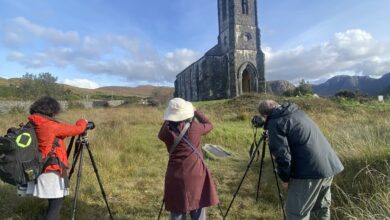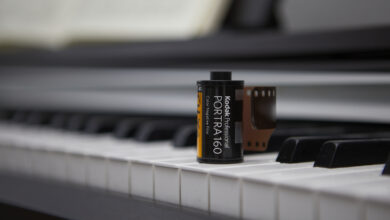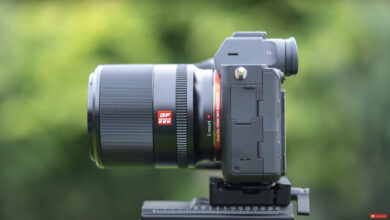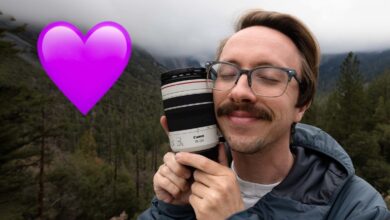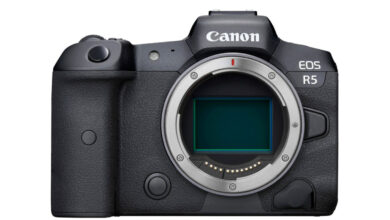Create a Slideshow in Adobe Premiere Pro in Six Easy Steps
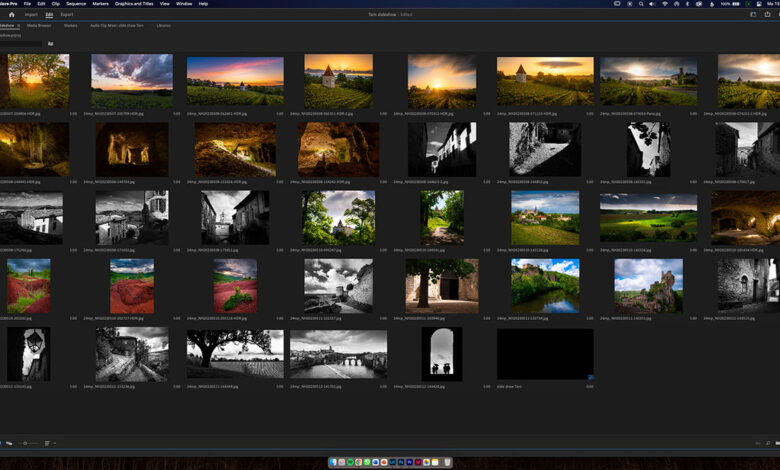
If you are using Lightroom Classic for photo editing, you can use the presentation module. This module makes it easy to create slideshows and export as video files. Try Premiere Pro if you want to take your presentation to the next level.
In the past, I’ve created a few slideshows in Lightroom Classic’s Presentation module. It’s simple and easy to use. Simply select the images in your catalog and switch to the Presentation module.
Although there are benefits, there are also limitations. Lightroom Classic only allows 1080p resolutions and has no way of fully controlling the output quality. Here is an example of a slideshow made in Lightroom Classic.
If you want to go beyond the capabilities of the Lightroom Classic Presentation module, a standalone slideshow program is a possibility. But you can also use Premiere Pro, which offers an almost unlimited number of options for creating great slideshows. Adding individual photos to a track in Premiere Pro can be laborious and time consuming. But you can use a simple and easy method to add multiple photos at once. In this article, I will explain how. This can be a starting point from which you can work your way up.
Step 1: Select and import photos in Premiere Pro
You need to select the photo you want to use in your slideshow. Export these photos at the right size. If your slideshow is in 4K, make sure the height of the photo is 2,160 pixels. If your slideshow is in full HD, a height of 1,080 pixels should be enough.
There is no problem using a larger resolution as you can reduce the size in Premiere Pro. But if you have a smaller resolution, increasing the size will have a negative impact on quality and sharpness.
Create a bin in the Premiere Pro file navigation panel and add your chosen photo. But don’t add photos to the sequence.
Step 2: Set display time and photo order
Create a file navigation panel containing thumbnails in full screen by pressing the tilde on your keyboard. This will make it a lot easier to rearrange the photos to your liking. Use the slider to adjust the thumbnail size and drag the photos in the desired order.
If you’re done, just press control or command + A and open the context menu. Select the speed/duration and set the desired duration. In most cases, five seconds is more than enough.
Press the tilde button again to resize the file navigator.
Step 3: Add photos to the video series
Make sure you’ve created the video sequence with the correct size and frame rate. If you forget, the size of the video will have the same aspect ratio as your photo when you add it. I always use 4K 25p as my basic video sequence setting, but you can also choose your own.
Now, it’s time to add photos to the track. Press control or command + A to select all images. Drag the entire selection to the track in your video sequence.
Unless the photo has the correct resolution, you need to resize it. Keep all the photos on the line selected and choose to scale to the frame size from the context menu.
Step 4: Create effects for photos
Having photos in your slideshow is not enough. Give your slideshow a cinematic look by zooming in while the photo is on the screen. Keep it delicate for best effect. Just increasing the size by 10 percent is usually enough.
Select one of the photos to add this effect. Once motion is added, select copy from the context menu when right clicking on the photo. Now select all the pictures from the series and select past properties from the context menu. Make sure the motion is selected and press OK to paste the effect.
Finally, add a simple transition between each photo. If you want to use the default transition, just press joystick or command + D after selecting all the photos on the track.
Step 5: Fill the blank background
When the photo does not fit the 16:9 aspect ratio, a black background is displayed. If you don’t like this, you can use the displayed image as a blurred background. For this, select all the photos and copy them to the second track on the original.
Select all photos from the track below and select nest from the context menu. Increase the size of the content on this track until it completely fills the background. Place the player on the image with the largest black bars on the sides to see how much you need to increase the size.
Add a Gaussian blur to this track below and set the Gaussian blur to your liking. Make sure repeating edges are selected. Now, you are ready for the final step.
Step 6: Set title and add music
You want to let your viewers know what they’re watching. A title would make it more appealing and perhaps a credit as well. After all, a slideshow is basically a short film. Premiere Pro comes with a number of standard preset titles, or you can create your own.
Depending on your Premiere Pro skills, you can create as fancy a title as you like. Maybe a simple text is enough. Or combine the title with one of the most compelling photos from your slideshow. If you have video footage available, use it for your title sequence.
It is also possible to add photo information to each slide. Unfortunately, I don’t know if Premiere Pro can read EXIF data from photos to automatically add this data, like in Lightroom Classic’s presentation module. If you know of such a way, please let me know in the comments below.
The final addition, and perhaps the most important, is the music. Without music, the viewing experience would be boring. Search for a track that matches your photo and add it to your video series.
Export slideshow video and enjoy the result
If the results are to your liking, it’s time to export the slideshow. Monitor the video file size and adjust the bitrate if the file becomes too large. Just don’t make the bitrate too small, as that affects the quality of your presentation. Don’t forget to output the audio.
I’ve made a few slideshows this way, and once you get used to the method, it’s quick and easy. I’d like to invite you to watch the slideshows I’ve made in Premiere Pro on YouTube.
Which brings me to one last tip. Don’t make your slideshow too long. It’s better to make several episodes instead of one long slideshow. No matter how good your photos are, people tend to get bored after a few minutes.
Of course, there are specialized programs for creating slideshows. But if you already have access to Premiere Pro, you can easily use it for your own slideshows. You can also combine slideshows with videos and create your own animated titles and text.
Please feel free to share your own slideshow in the comments below. Mention how you make slideshow also. I look forward to seeing your work.
